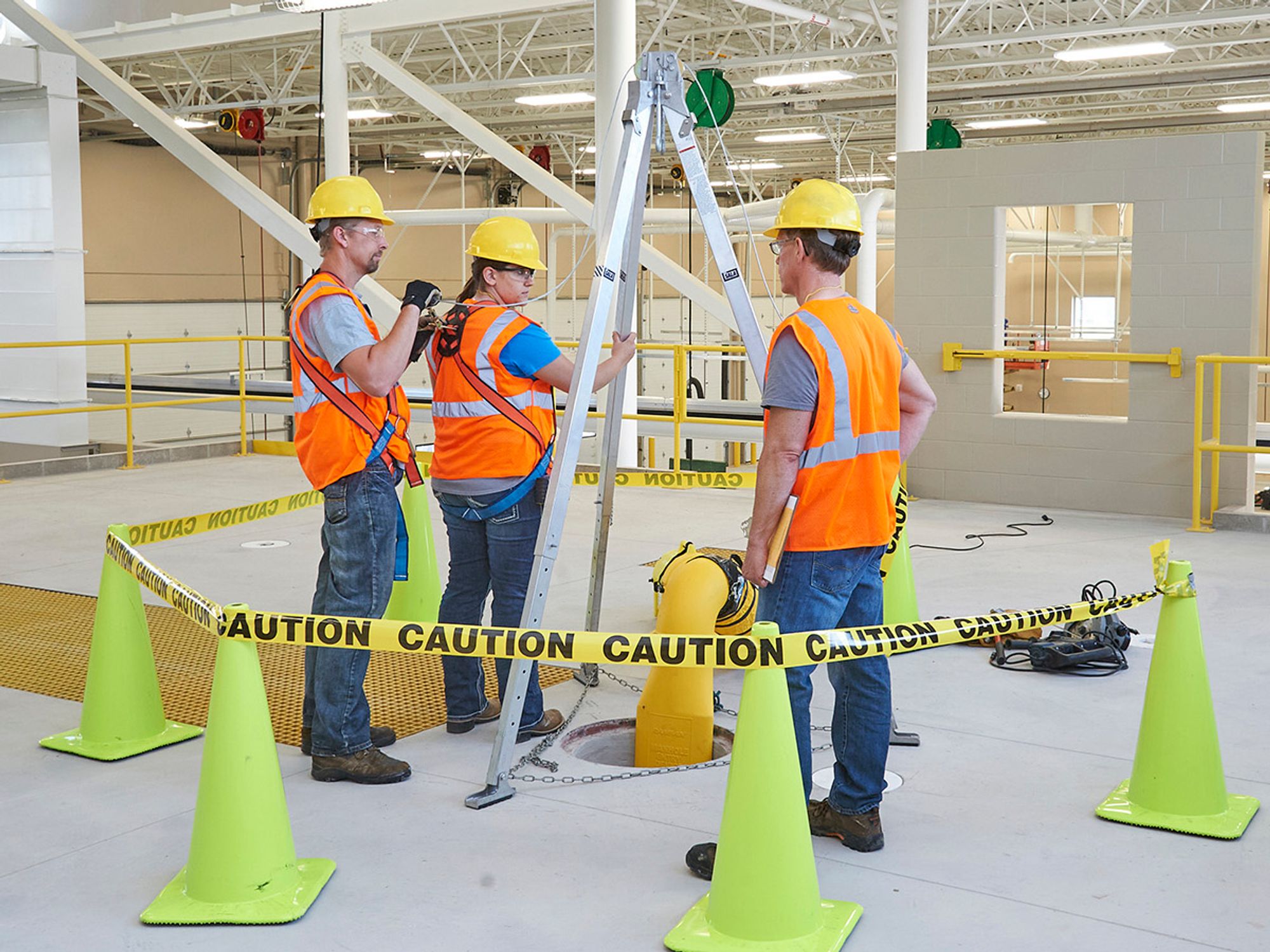Key definitions

Acceptable entry conditions: The conditions that must exist in a permit-required confined space, before employees may enter, to ensure that they can safely enter and work in the space.
Attendant: An individual stationed outside one or more permit-required confined spaces who monitors the authorized entrants and who performs all duties assigned to attendants under the employer’s permit space program.
Authorized entrant: An employee who is authorized by the employer to enter a permit-required confined space and who performs all duties assigned to entrants under the employer’s permit space program.
Competent person: An employee capable of identifying existing and predictable hazards in the surroundings or working conditions which are unsanitary, hazardous, or dangerous to employees, and who has the authorization to take prompt corrective measures to eliminate them.
Confined space: A space that:
- Is large enough and so configured that an employee can enter and perform assigned work; and
- Has limited or restricted means for entry or exit (for example, tanks, vessels, silos, storage bins, hoppers, vaults, and pits); and
- Is not designed for continuous employee occupancy.
Construction work: Work for construction, alteration, and/or repair, including painting and decorating.
Double block and bleed: The closure of a line, duct, or pipe by closing and locking or tagging two in-line valves and by opening and locking or tagging a drain or vent valve in the line between the two closed valves.
Early-warning system: The method used to alert authorized entrants and attendants that an engulfment hazard may be developing. Examples of early-warning systems include but are not limited to: Alarms activated by remote sensors; and lookouts with equipment for immediately communicating with the authorized entrants and attendants.
Emergency: Any occurrence (including any failure of hazard control or monitoring equipment) internal or external to a permit-required confined space that could endanger entrants.
Engulfment: The surrounding of a person by a liquid or flowable solid that can cause death if inhaled or by strangulation, constriction, or crushing.
Entry: The action by which a person passes through an opening into a permit-required confined space. Entry includes all ensuing work activities in the space and begins the moment any part of the entrant’s body breaks the plane of an opening into the space.
Entry permit (Permit): The written or printed document that the employer provides to allow and control entry into a permit space and that contains the information specified in either 29 CFR 1910.146(f) for general industry or 29 CFR 1926.1206 for construction.
Entry supervisor: The person (such as the employer, foreperson, or crew chief) responsible for determining whether acceptable entry conditions are present in a permit space where entry is planned, for authorizing entry, for overseeing entry operations, and for terminating entry.
- NOTE: An entry supervisor may also serve as an attendant or as an authorized entrant if the supervisor is trained and equipped for such roles. Additionally, the duties of entry supervisor may pass from one person to another during an entry operation.
Non-permit confined space: A confined space that neither contains nor could contain atmospheric hazards capable of causing death or serious physical harm.
Permit-required confined space (Permit space): A confined space with one or more of the following characteristics:
- It contains or has a potential to contain a hazardous atmosphere,
- It contains a material that has the potential to engulf an entrant,
- It is configured such that an entrant could be trapped or asphyxiated by converging walls or by a floor that slopes downward and tapers to a smaller cross section; or
- It contains any other recognized serious safety or health hazard.
Permit-required confined space program (Permit space program): The employer’s overall program for regulating employee entry into permit spaces, for controlling the hazards in permit spaces, and for protecting employees from these hazards.
Prohibited condition: Any condition in a permit space that is not allowed by the entry permit during the period when entry is authorized.
Qualified person: An employee who, by possession of a recognized degree, certificate, or professional standing, or who by extensive knowledge, training, and experience, has successfully demonstrated his ability to solve or resolve problems relating to the subject matter, the work, or the project.
Rescue service: The personnel designated to rescue employees from permit-required confined spaces.
Testing: The process of identifying and evaluating the hazards posed by permit spaces. Testing includes specifying the tests to be performed in the permit space.
- NOTE: Testing lets employers implement adequate control measures for protecting authorized entrants and determine whether acceptable entry conditions are present before and during entry.
